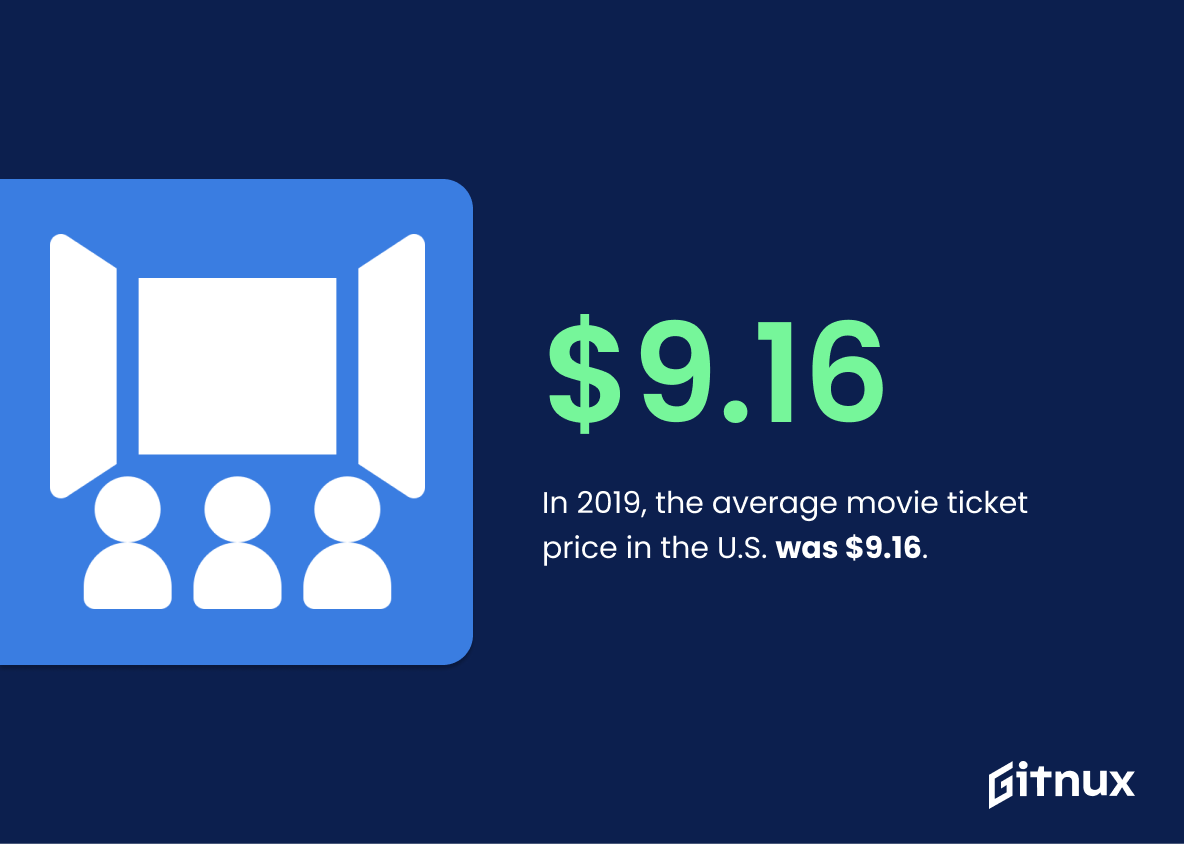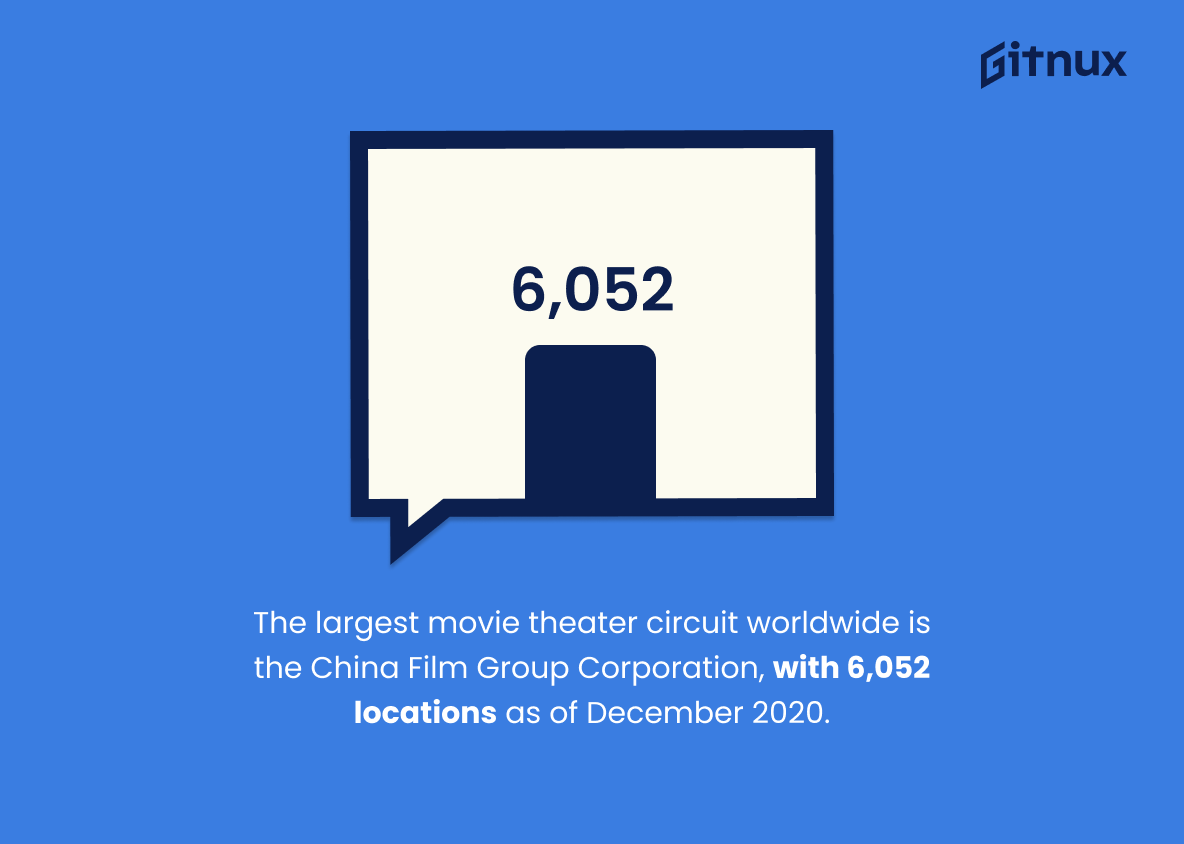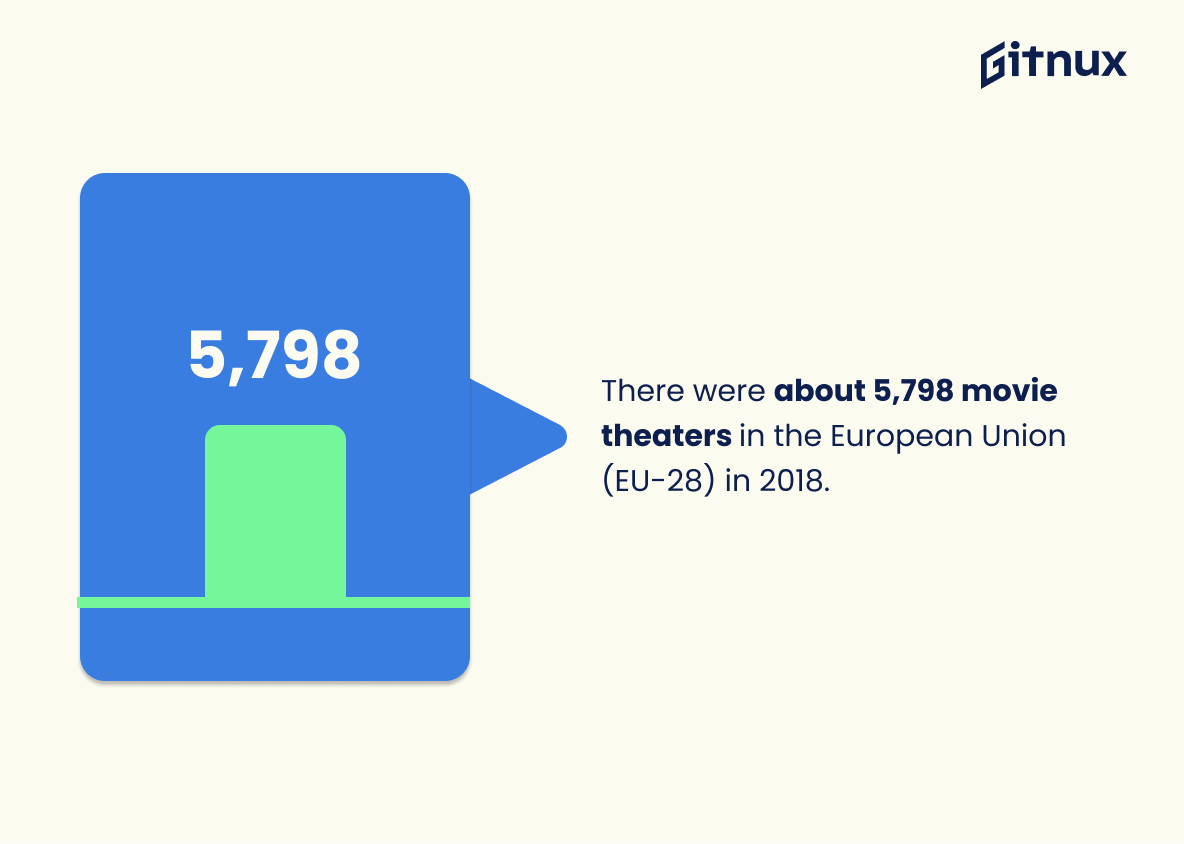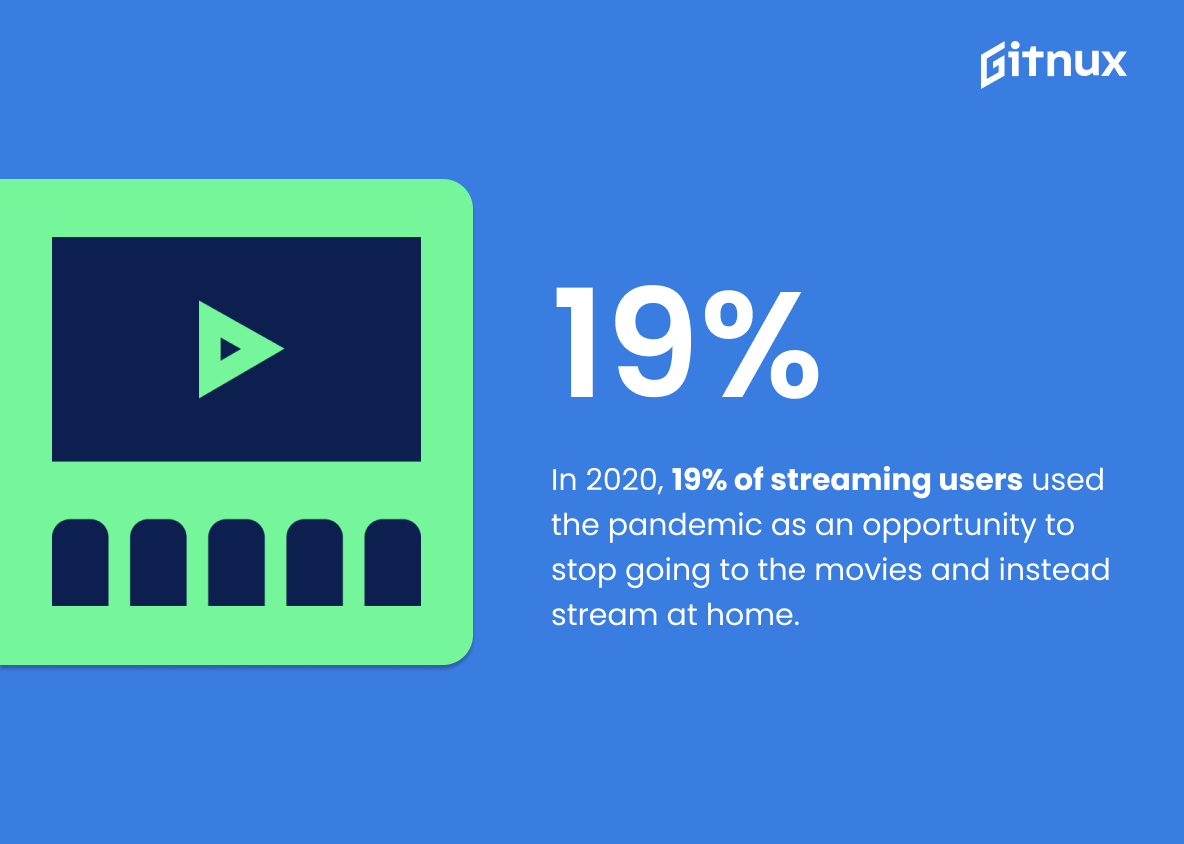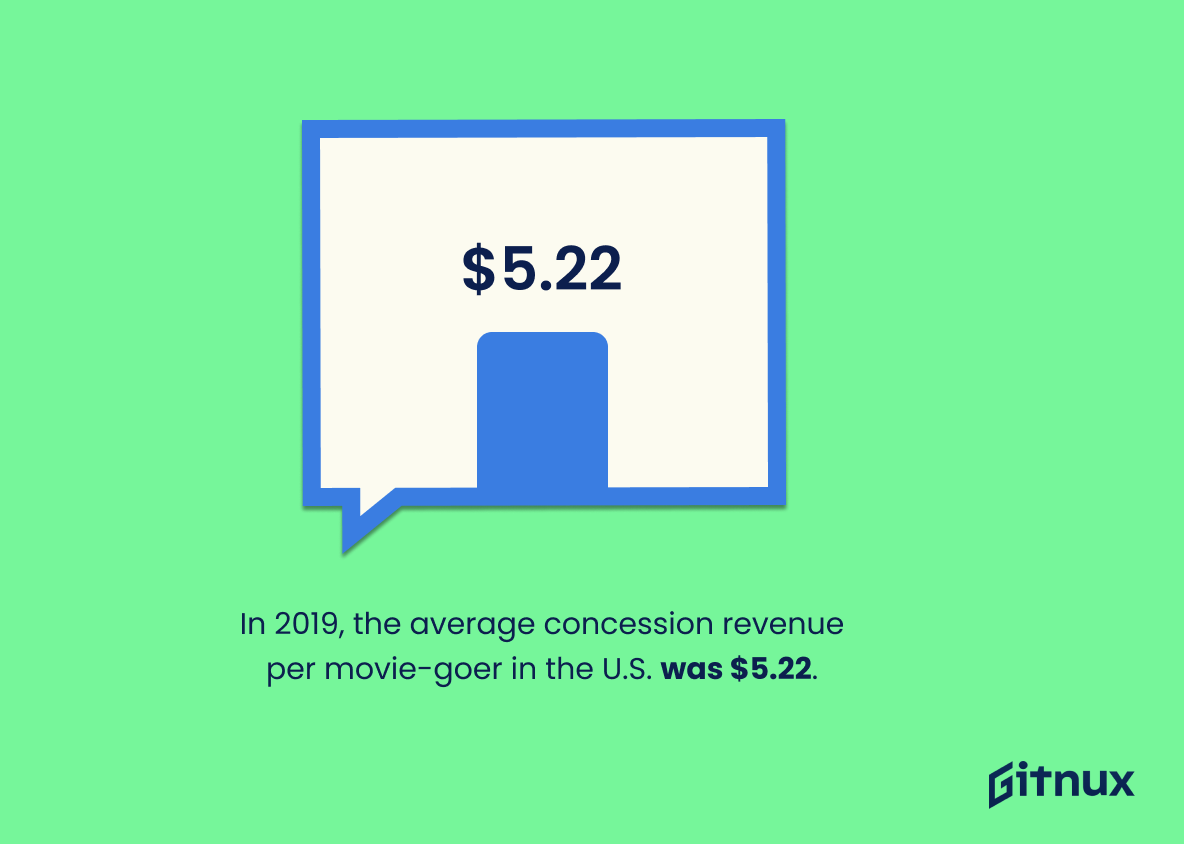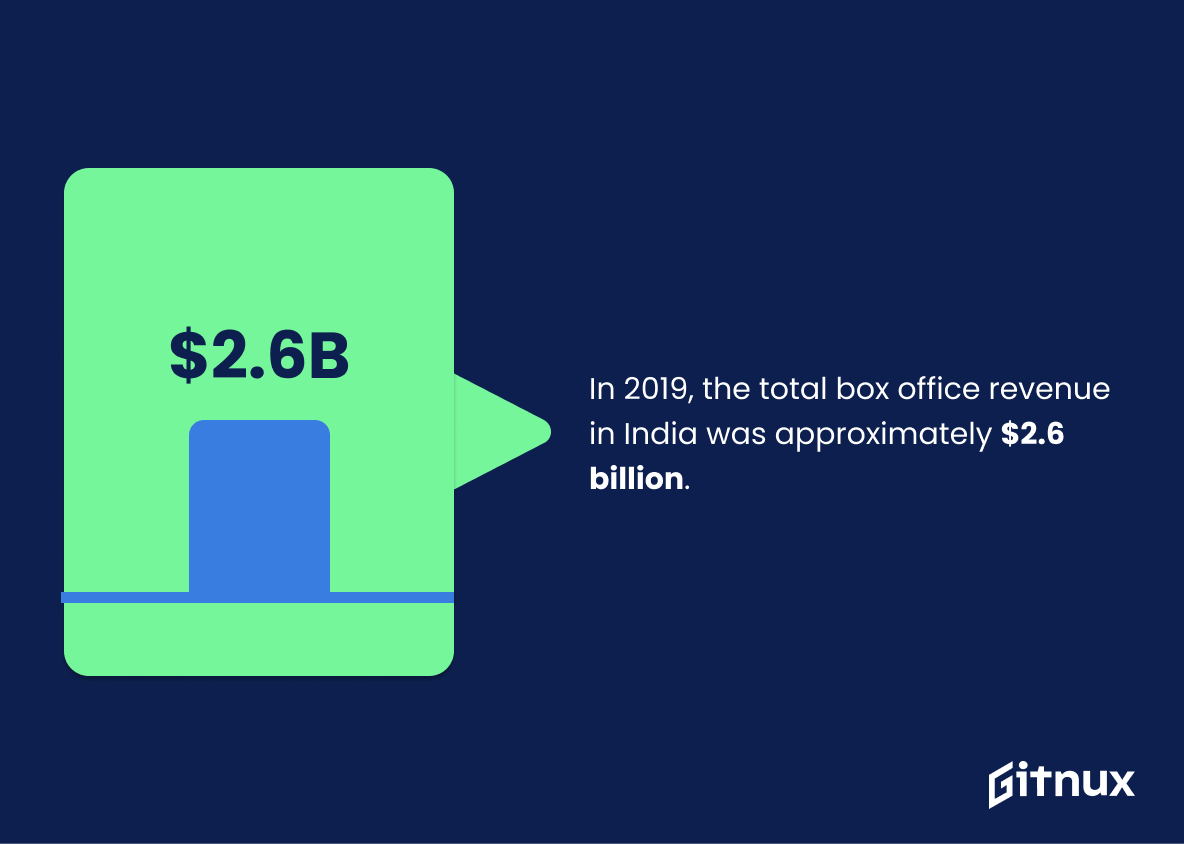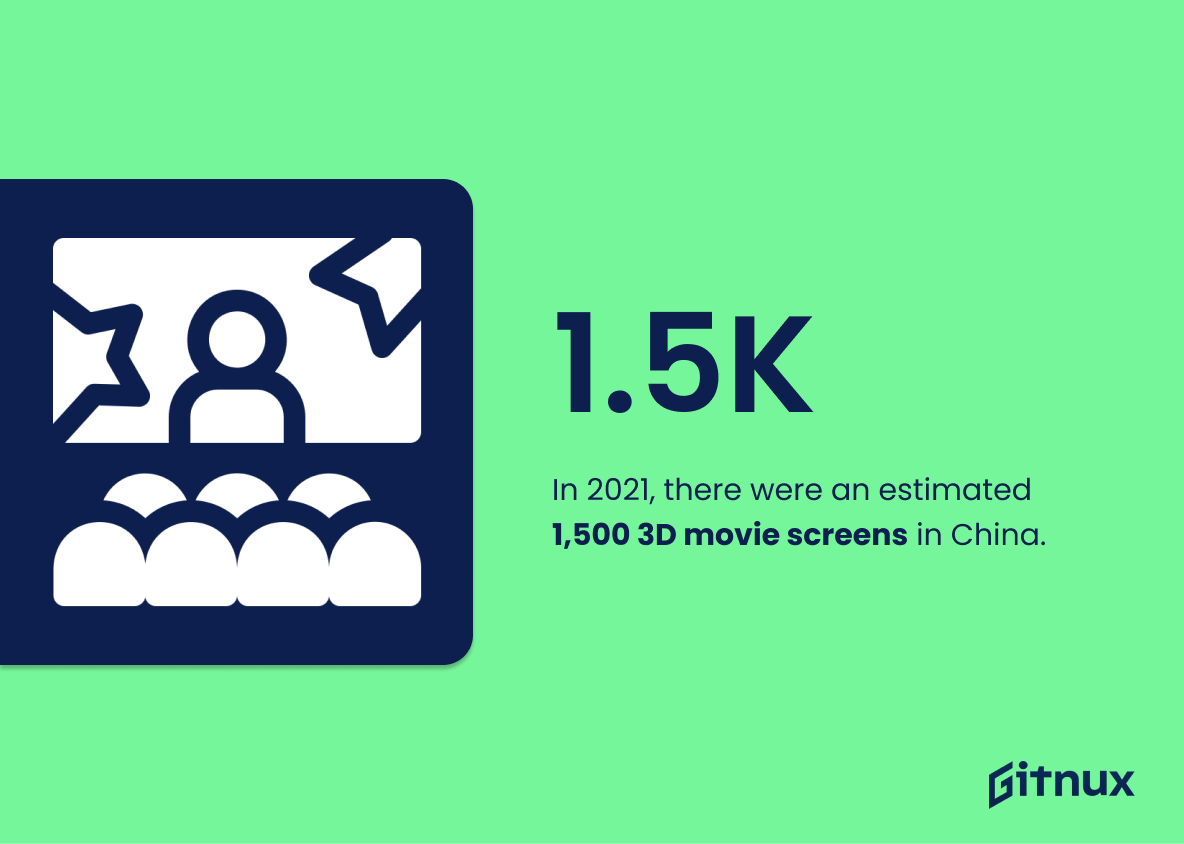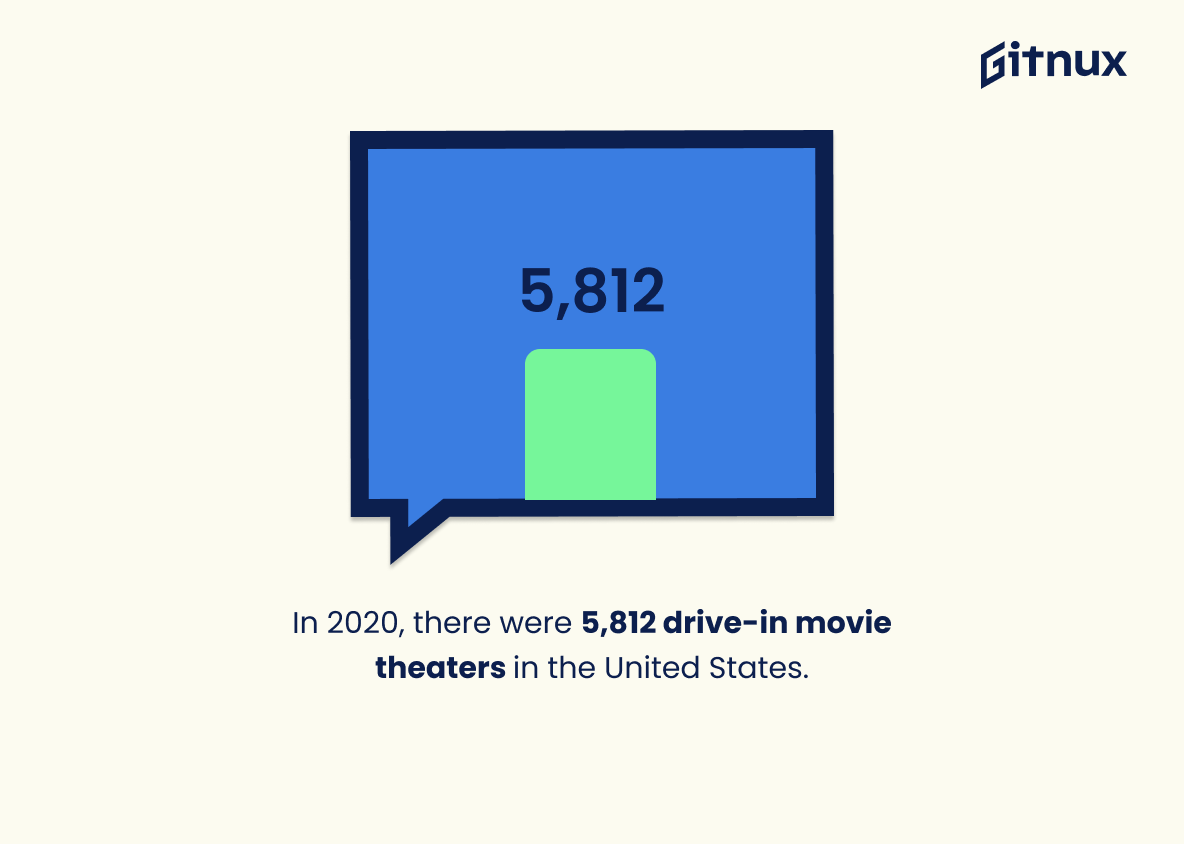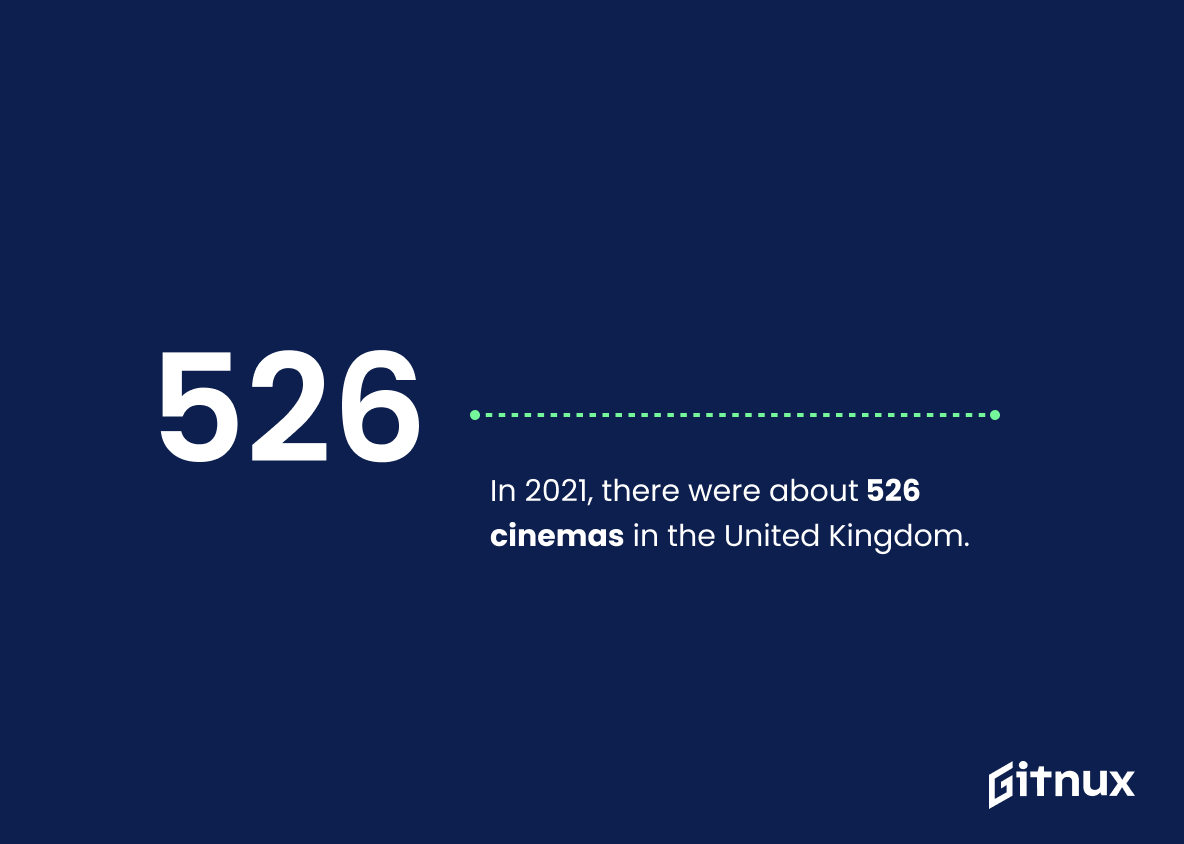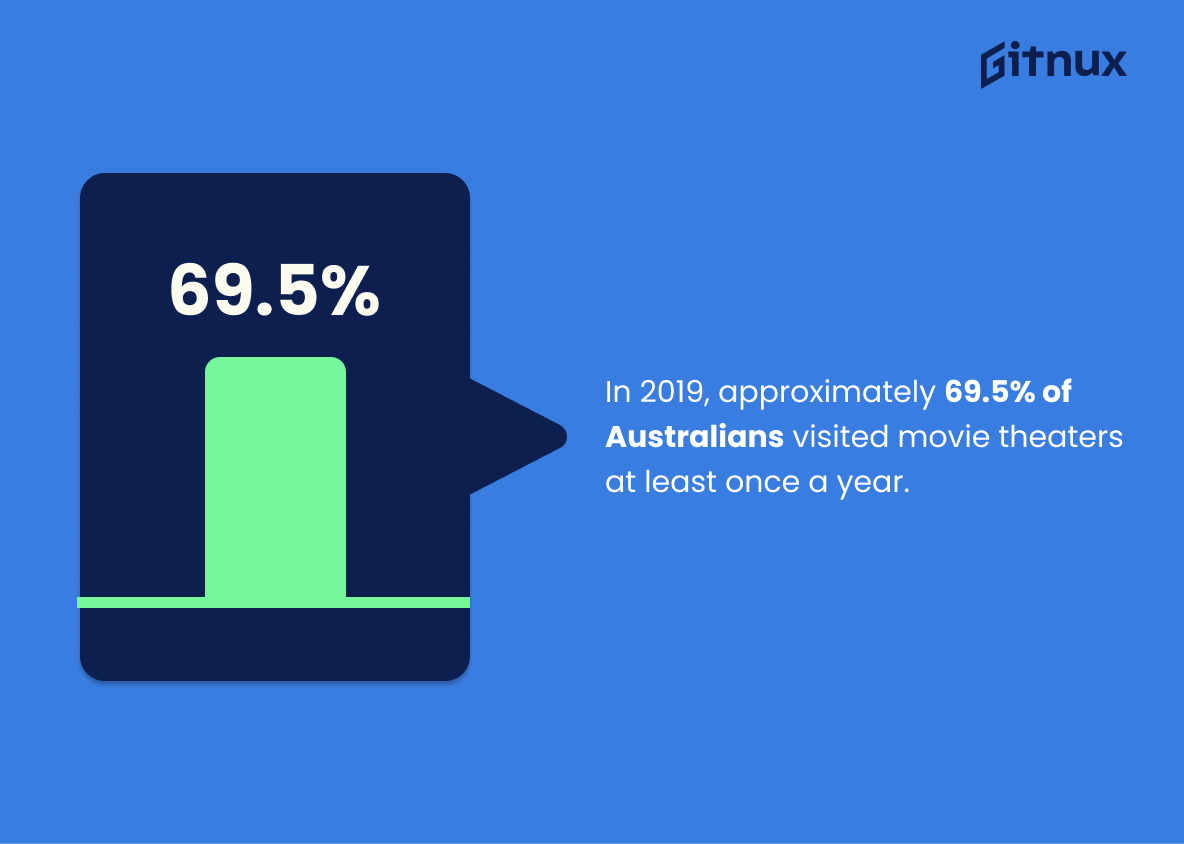The movie theater industry has been drastically impacted by the COVID-19 pandemic, with global box office revenue dropping from $42.5 billion in 2019 to just $12.4 billion in 2020. In this blog post, we will explore some of the latest statistics on movie theaters around the world and how they have been affected by recent events. We’ll look at data such as number of screens worldwide, average ticket prices, concession sales per person, 3D cinema usage in China and more. Additionally, we’ll examine which countries are leading the way when it comes to attendance rates and what impact streaming services have had on traditional cinemas during these unprecedented times.
This statistic is a stark reminder of the devastating impact the pandemic has had on the movie theater industry. It highlights the immense losses suffered by theaters worldwide, with a staggering 70% decrease in box office revenue from 2019 to 2020. This serves as a powerful reminder of the importance of supporting the movie theater industry in the future.
There were about 40,613 movie screens in the U.S in 2020.
This statistic is a telling indication of the state of the movie theater industry in the United States. It reveals that despite the pandemic, there are still a significant number of movie screens in the country, indicating that the industry is still alive and well. This statistic is important to consider when discussing the overall health of the movie theater industry in the United States.
Movie Theater Statistics Overview
In 2019, the average movie ticket price in the U.S. was $9.16.
This statistic is a key indicator of the state of the movie theater industry in the United States. It provides insight into the cost of attending a movie theater, which can be used to compare the cost of going to the movies to other forms of entertainment. Additionally, it can be used to gauge the overall health of the movie theater industry, as higher ticket prices may indicate that the industry is doing well, while lower ticket prices may indicate that the industry is struggling.
The largest movie theater circuit worldwide is the China Film Group Corporation, with 6,052 locations as of December 2020.
This statistic is a testament to the immense popularity of movie theaters in China, highlighting the country’s commitment to the cinema experience. It also serves as a reminder of the global reach of the movie theater industry, with China Film Group Corporation leading the way. This statistic is a powerful reminder of the impact that movie theaters have on the entertainment industry and the world at large.
In 2020, only 36.3% of moviegoers frequented movie theaters between one and three times.
This statistic is a telling indication of the impact the pandemic has had on movie theaters. It shows that the majority of moviegoers have not been frequenting theaters as much as they used to, likely due to health and safety concerns. This statistic is a stark reminder of the challenges movie theaters have faced in 2020 and the need for them to adapt to the changing landscape.
There were about 5,798 movie theaters in the European Union (EU-28) in 2018.
This statistic is a telling indication of the prevalence of movie theaters in the European Union. It speaks to the popularity of the cinema-going experience in the region, and the potential for growth in the industry. It also provides insight into the economic impact of movie theaters in the EU, as well as the potential for further investment in the sector.
In 2020, the movie theater industry in the United States employed about 95,517 people.
This statistic is a powerful indicator of the importance of the movie theater industry in the United States. It shows that despite the challenges posed by the pandemic, the industry still provides employment for a significant number of people. This statistic is a testament to the resilience of the movie theater industry and its ability to adapt to changing circumstances. It also highlights the importance of the industry to the US economy and its contribution to job creation.
In 2020, 19% of streaming users used the pandemic as an opportunity to stop going to the movies and instead stream at home.
This statistic is a telling indication of how the pandemic has impacted the movie theater industry. It shows that the pandemic has caused a significant shift in consumer behavior, with many people opting to stay home and stream instead of going to the movies. This shift in behavior has had a major impact on the movie theater industry, and this statistic serves as a reminder of the challenges that the industry is facing.
In 2019, the average concession revenue per movie-goer in the U.S. was $5.22.
This statistic is a telling indication of the financial success of movie theaters in the U.S. in 2019. It shows that movie-goers are willing to spend money on concessions, which is a major source of revenue for theaters. This statistic is important for understanding the overall health of the movie theater industry and can be used to inform decisions about how to best maximize profits.
In 2020, the global market revenue of cinema advertising amounted to an estimated $2.11 billion.
This statistic is a testament to the power of cinema advertising, showing that it is still a viable and lucrative form of marketing. It demonstrates that movie theaters are still a popular destination for advertisers, and that the industry is still a major player in the global market. This is an important point to consider when discussing movie theater statistics, as it shows that the industry is still a viable and profitable one.
In 2019, the total box office revenue in India was approximately $2.6 billion.
This statistic is a testament to the immense popularity of movies in India. It shows that movie theaters are a major source of entertainment for people in India, and that the industry is thriving. This is an important piece of information for anyone interested in the movie theater industry, as it provides insight into the size and scope of the industry in India.
The Marvel movie ‘Avengers: Endgame’ is the highest-grossing film worldwide, with a total gross of $2.798 billion.
This statistic is a testament to the immense success of ‘Avengers: Endgame’, demonstrating its widespread appeal and popularity. It is a remarkable achievement that speaks to the power of the Marvel franchise and the impact it has had on the movie theater industry. This statistic is a reminder of the potential for success that movie theaters have when they invest in popular films.
In 2021, there were an estimated 1,500 3D movie screens in China.
This statistic is a telling indication of the growing popularity of 3D movies in China. It shows that movie theaters are investing in the technology to meet the demands of their customers, and that 3D movies are becoming increasingly popular in the country. This is an important piece of information for anyone interested in the movie theater industry, as it provides insight into the current trends in the market.
In 2020, there were 5,812 drive-in movie theaters in the United States.
This statistic is a telling indication of the state of movie theaters in the United States. It shows that despite the pandemic, drive-in movie theaters have been able to remain open and provide an alternative to traditional movie theaters. This statistic is a testament to the resilience of the movie theater industry and its ability to adapt to changing circumstances.
In 2021, there were about 526 cinemas in the United Kingdom.
This statistic is a telling indication of the state of the movie theater industry in the United Kingdom. It shows that despite the pandemic, there are still a significant number of cinemas in the country, indicating that the industry is still alive and well. This statistic is important to consider when discussing the overall health of the movie theater industry in the UK.
In 2019, approximately 69.5% of Australians visited movie theaters at least once a year.
This statistic is a powerful indicator of the popularity of movie theaters in Australia. It shows that despite the rise of streaming services, Australians still value the experience of going to the movies. This statistic is an important piece of information for anyone writing a blog post about movie theater statistics, as it provides a snapshot of the current state of the industry.
In 2016, approximately 2.74 billion movie tickets were sold in European cinemas.
This statistic is a testament to the enduring popularity of movie theaters in Europe. It shows that despite the rise of streaming services and other home entertainment options, people still flock to the cinema to enjoy the big screen experience. This statistic is a reminder that movie theaters are still a major part of the entertainment landscape in Europe and that they remain a viable business option for entrepreneurs.
In 2020, the average capacity of indoor movie theaters in the United States was 247 people.
This statistic is a telling indication of the state of movie theaters in the United States in 2020. It reveals that, on average, movie theaters had a relatively low capacity, likely due to the pandemic and other restrictions. This statistic is important to consider when discussing the impact of the pandemic on the movie theater industry, as well as the potential for recovery in the future.
In 2019, the most common age group attending cinemas in the United Kingdom was 25-34 years old, representing 23% of respondents.
This statistic is significant in the context of movie theater statistics because it provides insight into the age demographic that is most likely to frequent cinemas in the United Kingdom. Knowing this information can help theater owners and marketers better target their promotions and services to this age group, as well as help them understand the preferences of this demographic.
In 2020, the use of video on demand and streaming services increased 52% in the U.S. in response to the COVID-19 pandemic.
This statistic is a telling indication of how the COVID-19 pandemic has impacted the movie theater industry. With the rise of video on demand and streaming services, movie theaters have had to compete with the convenience of staying at home and watching movies from the comfort of one’s own living room. This statistic highlights the need for movie theaters to adapt to the changing landscape and find ways to remain competitive.
Conclusion
The movie theater industry has been significantly impacted by the COVID-19 pandemic, with global box office revenue dropping to $12.4 billion in 2020 from $42.5 billion in 2019 and only 36.3% of moviegoers attending theaters between one and three times that year. The largest cinema circuit worldwide is China Film Group Corporation, which had 6,052 locations as of December 2020 while there were 526 cinemas in the United Kingdom and 40,613 screens across the U.S., both experiencing a decrease due to closures caused by lockdowns implemented during this time period. In addition to decreased attendance numbers at physical venues, streaming services saw an increase of 52%, providing viewers with more options for entertainment outside their homes than ever before – 19% even using it as an opportunity to stop going altogether instead opting for video on demand or streaming services over traditional methods such as visiting a local theater or drive-in venue (of which there are still approximately 5798). Despite these changes however, many people continue frequenting theaters when possible; evidenced by average ticket prices remaining steady at around $9 per person within the US market alone alongside concession sales averaging out at about $5 per customer each visit – not including additional income generated through advertising revenues estimated at roughly 2$11 billion globally last year.. It remains unclear what long term effects will be seen throughout 2021 but regardless it’s clear that despite its challenges this past year ,the film industry continues adapting accordingly so that audiences can enjoy movies safely no matter where they choose watch them from .
References
0. – https://www.www.statista.com
